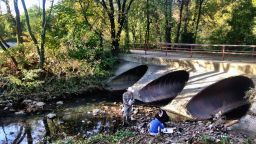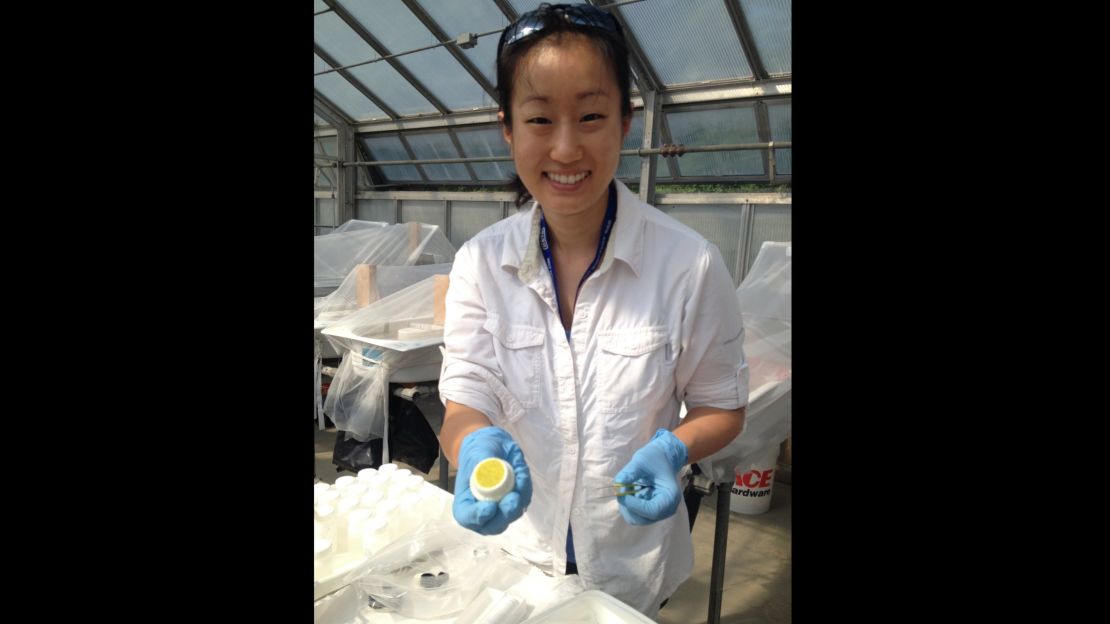Story highlights
Meth residue was found in streams across Baltimore
Replicating the condition in those streams, scientists saw how exposure to amphetamines changed aquatic life
You shouldn’t put illegal drugs in your body, and you shouldn’t let neighborhood bodies of water ingest them, either. A new study suggests that aquatic life in Baltimore is being exposed to drugs, and it’s having an impact.
And these aren’t soft drugs; they include methamphetamine and amphetamine. They’re messing with the growth and development of organisms in local streams.
It appears aquatic life – the moss that grows on rocks, the bacteria that live in the water and the bugs that hatch there – are the unexpected victims of Americans’ struggle with drug addiction.
The study is published in the latest edition of the journal Environmental Science and Technology.
The water was tested by scientists working with the Cary Institute of Ecosystem Studies who looked at six streams in and around Baltimore. The residue was particularly high in the water they tested in urban settings.
Since the researchers wanted to know whether these drugs had a direct impact on life in these waters, they created an artificial stream, complete with rocks and plants, and exposed it to the same level of amphetamine residue they found in natural waters.

After only a few weeks, the plants and bugs showed signs of being affected.
The growth of biofilms – the slippery organisms you find on rocks at the bottom of streams – was suppressed after exposure to this drugs. Bacterial life changed. Bugs that lived in the water developed quicker and emerged sooner.

Drug-addicted water bugs may not be on the top of your regular list of things to worry about, and it doesn’t mean you’ll be getting high off your tap water any time soon, but the kind of change these scientists saw could be a bigger concern.
Here’s why: These plants and bugs are the base of the aquatic food web. Birds eat the bugs, as do frogs and fish. As emergent contaminants such as pharmaceuticals and endocrine disruptors become more common in ground and drinking water, they could affect humans. Scientists say the direct health effects are pretty much unknown, and more research will need to be done.
This is not the first study to find drugs in water where drugs shouldn’t be. Studies have found the presence of other personal care products and drugs such as antidepressants, antibiotics, antihistamines, blood thinners, heart medications and hormones in rivers, lakes and streams. A US Geological Survey study done in 1999 and 2000 found some presence of pharmaceuticals in 80% of water samples from a large network of streams in 30 states.
What’s different about the new study is that it is one of the first to add methamphetamine and amphetamine to that long list of substances. Few studies have looked at the presence of illicit drugs in such waters.
If you’re wondering how in the world it got there, study co-author Emma Rosi-Marshall believes the root of the problem is our aging water infrastructure.

“They are likely coming down through leaks in the sewer,” said Rosi-Marshall, an aquatic ecologist at the Cary Institute of Ecosystem Studies. “It also has been shown that the drugs can be released from wastewater treatment plants that are not necessarily designed to remove these compounds.”
This means people may be directly flushing their drugs down the toilet. Or, more likely, illicit drugs are being excreted by users and literally going down the drain.
Our bodies can metabolize only a small part of the drugs we take, illicit or otherwise, so a part of that drug can pass out of your body through your feces and urine. You can also sweat it out, and it can wash off and down the tub drain.
The Environmental Protection Agency (PDF) discourages nursing care facilities, pharmacies and hospitals from flushing unused drugs. There’s even a National Prescription Drug Take-Back Day. But such policies and special days help only with legal drugs. They clearly can’t stop illegal drug users from passing them along into the water system.
Consequently, Rosi-Marshall and her co-authors argue, more needs to be done to strengthen our water systems.
Join the conversation
“We need to invest in maintaining and repairing our aging underground water infrastructure and potentially develop new technology,” Rosi-Marshall said.
Sewage treatment plants can remove some medicines from the water, as they clean it for other elements, but not everything gets filtered out. Improving these technologies may be a good start to help the environment and to protect public health, Rosi-Marshall said.



